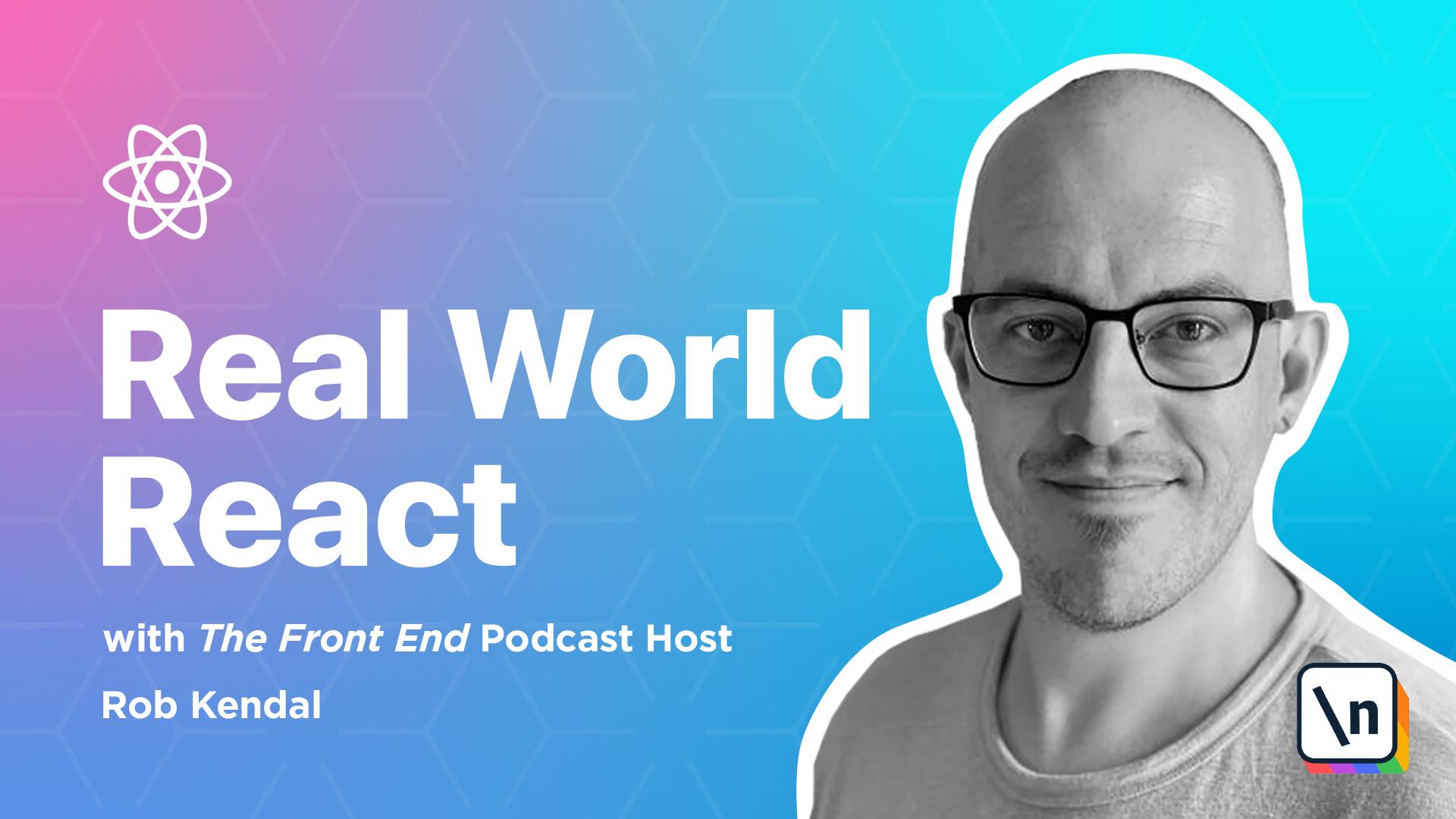Course introduction
This is the introduction to the Beginner's Guide to Real World React.
This lesson preview is part of the Beginner's Guide to Real World React course and can be unlocked immediately with a \newline Pro subscription or a single-time purchase. Already have access to this course? Log in here.
Get unlimited access to Beginner's Guide to Real World React, plus 90+ \newline books, guides and courses with the \newline Pro subscription.

[00:00 - 01:01] Welcome to the Beginner's Guide to Real World React. I'm Rob Kendall and I'll be our instructor throughout this course. Let's learn a little bit more about what the course will cover and what topics you'll learn. The Beginner's Guide to Real World React will teach you how to successfully build web applications with modern front-end techniques using the React.js library. But why this course? React.js, our Simply React, is a popular UI library that was developed by Facebook and first published in May of 2013. It allows for a modular and declarative approach to building user interfaces for web-based applications. It has grown very popular over the past few years and is one of the most sought-after libraries to learn and use by new and upcoming developers. However, React on its own is only one piece of the puzzle and doesn 't out of the box care to have some of the missing pieces of common front-end development . Pieces such as connecting to an API or external data source and retrieving data to power your app. Navigating around your app to different pages or areas and managing the state of your application's data at a higher level, i.e. outside of components.
[01:02 - 01:32] The problem is these missing pieces are vital parts of any modern web application, as well as any realistic development scenario. It's key to understand both their concepts and how to approach them in React development. Many tutorials only cover one aspect of these and don't bring them together in a realistic setting. Our completion of the Beginner's Guide to Real World React, you will not only have knowledge of modern React development, but also the skills required to build real-world apps that talk to real data. You don't have to be a coding guru or have years of experience as this course is designed for beginners.
[01:33 - 02:06] However, you should be familiar with the basics of front-end development, including HTML, CSS and JavaScript. It would be helpful to have an understanding of basic concept around restful APIs and how to interact with them, but it's not essential. In the Beginner's Guide to Real World React, you will join me on a deep dive into core React concepts. As you progress throughout this course, you will learn more about how React works, how you can use it to build complex web applications and how to combine it with third-party libraries and frameworks to join the dots. You will gain a detailed understanding of how you might use React in a real-world setting.
[02:07 - 03:17] In part one of the course, we'll take an end-to-end approach to React. We'll start with taking a look at the library itself and the problems it solves. Before moving onto topics such as hooks and handling data from an API. Finally, we'll talk about how to build and deploy an application to a popular service such as Netlify. Included in the introductory part of the course are the following modules. Module 1, this very introduction. Module 2, React.js, an introduction to React, a modern UI library. Module 3, React hooks, what they are and how to use them. Module 4, fetching data, using APIs in your code and popular helpful libraries such as Axios. And module 5, deploying your first app , using Netlify to deploy our app to the public. In the extended course, part 2, we'll cover similar topics to the first book, take a deeper dive into them and look at some of the challenges we face as React developers and how to overcome them. We'll also learn about navigating around our application and managing stairs across our application using Redux, a common stumbling block for aspiring React developers. The outline for part 2 of the course includes the following modules. In module 6, think in React structuring your projects, breaking functionality into components.
[03:18 - 03:29] Module 7, React hooks deep dive. Learn what each hook does and how to use them. Module 8, navigation in complex apps. Moving users around different areas of your application.
[03:30 - 03:44] Module 9, state management in complex apps. Using Redux and use reduce the hooks to manage apps state. And finally, in module 10, the dinosaur search app, putting it all together by building our very own application.